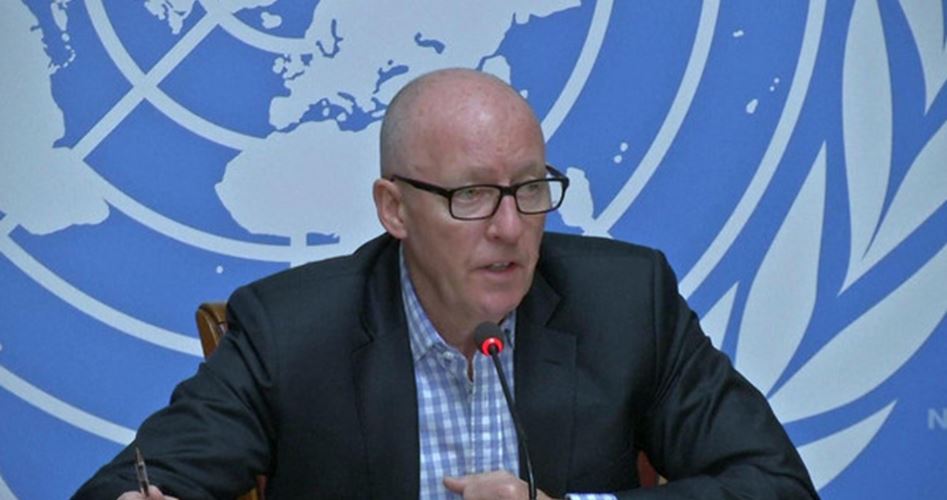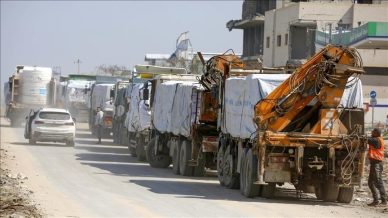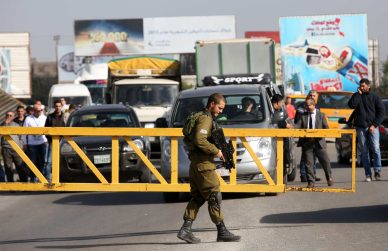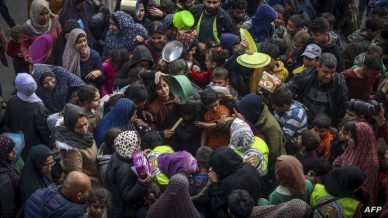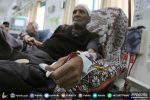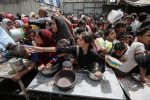Jamie McGoldrick of the UN Office for the Coordination of Humanitarian Affairs (OCHA) announced on Wednesday the launch of the Humanitarian Response Plan (HRP) for 2018 which aims to support the needs of 1.9 million Palestinians in the occupied Palestinian territory or oPt.
McGoldrick said the plan exists in the context of one of the world’s most long-standing protection crises which remains directly tied to the impact of Israel’s occupation which marked its 50th year in June 2017 alongside internal Palestinian divisions and Egypt’s closure of Rafah crossing.
“This year we are especially pleased to co-launch the appeal in Gaza with the State of Palestine. In so doing we are sending a strong message of our joint commitment to improving the humanitarian situation for Gaza’s nearly 2 million Palestinian residents over half of them children” he said.
“There is no place more fitting to launch the humanitarian plan than Gaza where we see a man-made tragedy unfolding daily. Today Gaza is on the brink of catastrophe and humanitarian needs run deep. Ten (10) years of intensified movement and access restrictions recurrent escalations of hostilities alongside internal Palestinian divisions and closure of Rafah have left 70 per cent of the population reliant on international aid” he added.
“Some 40 per cent of Gaza’s households fail to meet international standards for food security; unemployment stands at nearly 47 per cent due largely to a crippled economy limited by restrictions on movement of people and goods and an energy crisis that leaves people without electricity up to 20 hours a day” McGoldrick warned.
“Without donor-funded emergency fuel distributed to critical water sanitation and health facilities we would face a total systems collapse with the result a humanitarian disaster. Even with support 40 per cent of the population receives just 4 to 6 hours of water supply every 3 to 5 days and over 100 million liters of sewage – nearly all of it raw –flows into the sea each day. Access to healthcare a basic human right is denied to thousands due to a lack of drugs equipment and expertise available in Gaza compounded by significant difficulty to exit the Strip to receive treatment elsewhere.”
“In front of us we see the damage left from the 2014 escalation of hostilities. Great strides have been made in the reconstruction effort but over 20000 Palestinians remain displaced from that period. Less visible is the psychological damage particularly on children sustained by hundreds of thousands of Palestinians during the conflict and those that preceded it” OCHA maintained.
“To the right we see the signs of the crisis in basic services that has worsened over the last year with an estimated 30000 tons of uncollected trash gathering at this site alone;
Behind me we see the Beit Lahiya sewage lagoons; a symbol of the insufficient water and sanitation infrastructure dependent on donor-funded fuel to pump out the sewage or risk an overflow of the lagoon like the one that claimed the lives of 5 Palestinians in 2007” OCHA’s statement read. “And finally to the left we see the access restricted areas on land where farmers face restrictions imposed by the Israeli authorities on their ability to access their agricultural land posing physical safety risks and impacting livelihoods across Gaza. These areas are among those with the highest vulnerability in the oPt a reality exemplified earlier this month when a 59-year-old Palestinian farmer was killed by Israeli gunfire while working on his farm in the restricted areas east of Khan Younis.”
According to McGoldrick in the West Bank the volume of needs are less but no less serious or urgent. Movement and access restrictions often in the context of Israeli settlement activity and discriminatory planning and zoning policies have fragmented the territory resulting in destroyed homes and livelihoods. The combined impact of a number of policies has created for many Palestinians in areas like Area C East Jerusalem and the Israeli-controlled part of al-Khalil city a coercive environment that pressures them to leave and generates a risk of forcible transfer.
“Some 270000 Palestinians in Area C are directly affected by Israeli restrictions and control over water and sanitation infrastructure” he said. “350000 people in the West Bank are vulnerable to settler violence and over 260000 people including Palestine refugees are in need of humanitarian healthcare. Access to education is heavily compromised by an increase in education-related violations affecting almost 40000 students and teachers.”
“Against this worrying backdrop of needs in the oPt the massive funding crisis faced by UNRWA one of the main service providers and a main employer particularly in Gaza should be of concern to everyone not just Palestine refugees” he stressed.
Overall the 2018 humanitarian plan appeals for US$ 539.7 million to address urgent humanitarian needs in the areas of protection food security health water and sanitation shelter and education. Of the request 75 per cent targets Palestinians in Gaza. Half of the overall amount is for UNRWA emergency projects.

